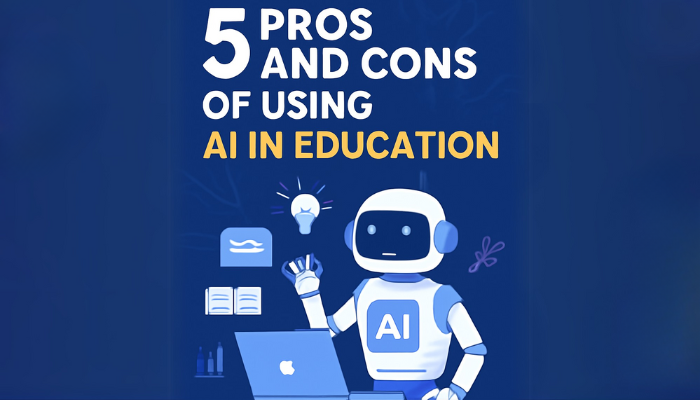Many U.S. businesses are struggling with rising operational costs, fragmented data, and slow decision cycles, and they are turning to AI for relief. AI’s ability to analyze vast datasets, automate workflows, and personalize customer interactions is transforming industries from finance to healthcare. This growing necessity is reflected in the fact that more than 77% of companies in the U.S. have adopted or are actively exploring AI technologies to stay competitive.
In this blog, we’ll take a closer look at the adoption rates of AI in various U.S. industries, the barriers businesses face when implementing AI at scale, and what the future holds for AI adoption.
Whether you’re already using AI or considering its potential, this blog will provide you with insights on how AI is changing the business landscape and why it’s essential to stay ahead of the curve.
Current AI Adoption Rates in U.S. Businesses
The use of AI across U.S. companies has grown exponentially in recent years, yet the scale and scope of its adoption vary significantly across industries. 78% of organizations now use AI in at least one business function, up from 72% in early 2024 and 55% a year earlier.
The Bipartisan Policy Center reports that businesses that have adopted AI complete their task 40% faster on average and their output quality improved by 18% compared to those who did not use AI, with the majority of these using AI in customer service, predictive analytics, and process optimization.
However, challenges remain as 74% of companies still struggle to scale their AI implementations. In industries like manufacturing and healthcare, these challenges are more pronounced. Manufacturing often deals with legacy equipment and complex supply chains, making data integration and real-time AI applications difficult to implement effectively. Healthcare faces strict regulatory requirements, concerns over patient privacy, and the need for highly accurate, interpretable AI models, all of which slow down broader adoption and scaling of AI solutions.
While AI is being adopted, many businesses are still in the early stages. Next, let’s explore which industries are leading the way in AI adoption.
Industry Trends in AI Adoption
Different industries are adopting AI at varying rates, with tech-heavy sectors taking the lead. Here’s a look at the industries driving AI adoption:
1. Finance and Technology
In finance, AI is used extensively for fraud detection, risk management, and automating complex trading strategies. Banks and financial institutions employ AI algorithms to analyze vast datasets in real time, identifying suspicious activity faster than manual systems. This not only reduces financial losses but also helps maintain regulatory compliance.
Tech companies adopt AI primarily to automate customer service through chatbots, personalize user experiences, and optimize backend operations such as cloud resource management. Google’s use of AI in search algorithms exemplifies how machine learning can refine user interactions, driving better engagement and revenue.
For instance, JPMorgan Chase uses AI for contract review and fraud prevention, cutting down processing times and improving accuracy. Also, more than 50% of U.S. companies with over 5,000 employees were using AI, and tech companies are pushing forward with innovations in automation and machine learning.
2. Manufacturing
Manufacturers implement AI to reduce downtime and improve efficiency. Predictive maintenance uses sensor data and machine learning models to forecast equipment failures before they happen, saving millions in repair costs and lost productivity. For example, Siemens uses AI-powered analytics to monitor and maintain gas turbines, achieving higher operational uptime.
Supply chain optimization is another critical area. AI analyzes complex logistics data to anticipate delays, optimize inventory, and reduce waste. By using AI for demand forecasting, companies like General Electric can better align production schedules with market needs, avoiding overproduction or stockouts.
3. Healthcare
In healthcare, AI enhances diagnostic accuracy and operational efficiency. Machine learning models help detect diseases like cancer from imaging data faster and sometimes more accurately than human experts.
For instance, IBM Watson assists in oncology by analyzing medical literature and patient data to recommend treatment options. Beyond diagnostics, AI supports patient data management, automating administrative tasks such as appointment scheduling and billing. Hospitals use AI to optimize resource allocation, ensuring staff and equipment are available when and where needed.
Generative AI tools are gaining traction at the point of care, with 40% of U.S. physicians open to integrating these technologies to improve patient communication and treatment plans. Early adopters report improved patient outcomes and operational workflows.
4. Retail
Retailers increasingly apply AI to personalize shopping experiences, optimize inventory, and forecast sales. AI-driven recommendation engines like those used by Amazon tailor product suggestions to individual customers, boosting sales and customer satisfaction. Inventory management AI helps retailers avoid overstock or stockouts by predicting demand fluctuations with higher accuracy.
5. Logistics and Transportation
AI transforms logistics by improving route planning, demand forecasting, and autonomous vehicle technology. Companies like UPS use AI to optimize delivery routes, saving fuel and time. AI-powered predictive analytics also help anticipate delays and manage warehouse operations efficiently, ensuring faster and more reliable service.
6. Energy and Utilities
The energy sector uses AI to monitor grids, predict equipment failures, and optimize energy consumption. For instance, AI models analyze data from sensors in power plants to schedule maintenance and avoid outages. Smart grids with AI control energy distribution dynamically, improving efficiency and supporting renewable energy integration.
7. Education
AI personalizes learning paths and automates administrative tasks. Platforms use AI to analyze student performance and suggest tailored content, improving engagement and outcomes. AI chatbots support student inquiries, reducing administrative workload.
While some industries are quick to embrace AI, there are still challenges to broader adoption. Let’s explore the key hurdles businesses face when implementing AI at scale.
Challenges in Scaling AI Adoption
Despite the growing interest in AI, many U.S. businesses face significant challenges in implementing and scaling AI solutions effectively.
1. Talent Shortage
A major obstacle in the widespread adoption of AI is the shortage of skilled professionals. There’s a clear gap in the availability of AI talent, which makes it difficult for companies to build and maintain AI systems at scale. With AI expertise in high demand, finding the right talent is a significant hurdle for many organizations.
Solution: Businesses can address this by investing in training existing staff through upskilling programs and partnering with universities or online platforms offering AI certifications.
2. Cost Barriers
Many small businesses face the high upfront costs associated with AI adoption. AI implementations require substantial investments in technology infrastructure, software, and personnel. These initial costs can be prohibitive, especially for smaller enterprises looking to compete with larger players.
Solution: To lower entry costs, organizations can start with cloud-based AI services that offer scalable, pay-as-you-go models. Using open-source AI frameworks and focusing on pilot projects that demonstrate clear ROI can also justify further investment.
3. Integration Issues
Integrating AI systems into existing infrastructures, particularly in legacy systems, is a common challenge. Many companies have complex IT ecosystems that were not designed with AI in mind. This makes it difficult to smoothly incorporate AI without disrupting existing workflows.
Solution: A phased integration strategy helps—starting with non-critical systems or isolated use cases allows gradual adoption. Utilizing middleware platforms or AI-ready infrastructure upgrades can also ease the transition, ensuring AI complements rather than conflicts with existing workflows.
While businesses face these challenges, the future of AI in the U.S. holds immense promise. Let’s explore the future outlook for AI adoption.
The Future of AI Adoption in the U.S. Businesses
Looking ahead, AI adoption in U.S. businesses is poised for continued growth, with future advancements promising even more impactful transformations. The integration of AI with emerging technologies is expected to explore new possibilities for businesses across all industries.
1. AI as a Competitive Advantage
Companies that successfully adopt AI will have a competitive edge, particularly in areas like automation, customer service, and data-driven decision-making.
For example, retailers use AI-powered chatbots to handle customer inquiries 24/7, reducing wait times and improving satisfaction. Financial firms deploy AI algorithms for fraud detection, identifying suspicious activity faster than manual processes.
2. AI and Small Business Productivity
Small businesses are also starting to benefit from AI technologies. They are using AI tools to increase productivity, automate tasks, and better compete with larger enterprises. AI’s potential to improve operational efficiency is especially valuable for small businesses, which often operate with limited resources.
For example, a local restaurant might use AI-based reservation and ordering systems to reduce staff workload and enhance customer experience. Similarly, AI-driven email marketing platforms help small businesses target customers more effectively without needing a large marketing team.
3. Emerging Trends
The future of AI is closely tied to advancements in related technologies. Integration with 6G and edge computing will enable real-time data processing critical for applications like autonomous vehicles or smart manufacturing, where delays can cause failures. Cybersecurity is another growing area; AI-powered threat detection systems are already helping companies identify cyberattacks before they cause damage, as seen in financial institutions using AI to monitor suspicious transactions.
As AI continues to evolve, businesses need to prepare for the future by adopting AI in a way that aligns with their strategic goals and operational needs.
Codewave’s Role in AI Adoption for U.S. Businesses
Codewave, a leader in AI/ML development and digital transformation, is helping U.S. businesses embrace AI to drive innovation and optimize operations. With its expertise in integrating AI into business workflows, Codewave helps companies of all sizes implement AI solutions that align with their specific needs.
Codewave supports businesses by delivering tailored AI and machine learning solutions designed to solve real-world challenges. Our services include building custom AI models, developing intelligent automation workflows, and integrating AI-powered analytics into existing systems to drive smarter decision-making.
We specialize in creating AI Minimum Viable Products (MVPs) that allow businesses to test and validate AI applications quickly before scaling. Additionally, Codewave offers expertise in natural language processing, computer vision, and AI agent development to help companies automate customer support, improve operational efficiency, and extract actionable insights from data.
Contact Codewave to learn how our AI-driven solutions can help you optimize operations, enhance customer experiences, and stay ahead of the competition.
Codewave is a UX first design thinking & digital transformation services company, designing & engineering innovative mobile apps, cloud, & edge solutions.







